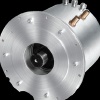|
Plug‐in Hybrid Electric Vehicles
Summary
Vehicle purchases are important economic decisions for individual consumers and have
important consequences for the nation as a whole. Consumers take capital and operating costs as well
as a range of non‐economic factors into account when making their purchase decisions. The major
operating cost for vehicles is the consumer’s expenditure on gasoline, which is determined by the
vehicle’s fuel efficiency, daily miles driven and the price of gasoline. Plug‐in hybrid electric vehicles
(PHEV) represent a significant change in technology with which most consumers are currently
unfamiliar. PHEVs are expected to reduce the cost of fuel by recharging batteries from electrical outlets,
but the vehicles are anticipated to cost significantly more than a conventional vehicle. Recharging
batteries would require a significant shift in consumer habits and in the infrastructure of the nation’s
electrical grid. Importantly, PHEVs are expected to reduce overall carbon dioxide emissions, counteract
global warming, and contribute to the energy independence of the nation. Environmental and other
non‐economic attitudes represent a potentially important component of PHEV purchase decisions.
The goal of this research was to assess the current state of knowledge and opinions about
PHEVs among U.S. consumers. Interviews were conducted from July to November 2008 with a
nationally representative sample of 2,513 adults. Questions about their potential interest in hybrid
electric vehicles supplemented questions about their current vehicles, their driving habits, mileage and
gasoline expenditures, parking location as well as official government data on the cost of gasoline,
electricity, and the MPG of the vehicle they drove. Data on the economic and demographic
characteristics of the household were supplemented by a range of environmental and other noneconomic
attitudes toward the new technology embodied in PHEVs. The purpose of this study was to
examine the conditions under which consumers would purchase a PHEV. Rather than focus on “first
adopters,” the research focused on the potential pool of purchasers in the first several years after the
introduction of PHEVs.
Hybrid electric vehicles include an electric motor and a battery pack in addition to an internal
combustion engine. There are two classes of hybrid designs that differ in the way the vehicle uses
gasoline and electrical power. In a “parallel” hybrid, gasoline is provided to a conventional engine and
the batteries supply power to an electric motor. The vehicle can be powered by either the engine or the
electric motor; the vehicle itself recharges the batteries during normal driving. In a “series” hybrid the
electric motors and gasoline engine are linked in line; the electric motor powers the vehicle and the
gasoline engine’s only function is to recharge the battery when an electrical outlet is not available. The
terms “hybrid electric vehicle” or HEV is used to indicate a parallel hybrid and the term “plug‐in hybrid
electric vehicle” or PHEV to indicate a series hybrid.
This research project focused on a determination of which factors would facilitate sales of plugin
hybrid electric vehicles and which factors would represent barriers to the successful introduction of
these vehicles. A successful introduction is based on more than just sales in the first few years. A
successful introduction implies an upward trajectory in sales that enables cost reductions though mass
production and in turn fosters even greater investments in advanced technology that acts to lower
prices and increase performance even more in the future. Needless to say, the successful introduction of plug‐in hybrid electric vehicles is a necessary but not a sufficient condition for the ultimate success of
this new technology. Other competing technologies will continue to challenge plug‐in hybrids for
market supremacy.
read more
|
|
Какъв автомобил бихте закупили?

|
Декември 2025
|

|
|
| Нед |
Пон |
Вто |
Сря |
Чет |
Пет |
Съб |
| | | | | | | | | | | | | | | | | | | | | | | | | | | | | | | | | | | |
|














